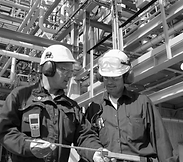Engineering and Technology Quarterly Reviews
ISSN 2622-9374




Published: 22 April 2020
Local Wisdom in Reducing Greenhouse Effect on Balinese Traditional Settlement Patterns in Bongli Village, Bali, Indonesia
I Made Adhika, Ngakan Ketut Acwin Dwijendra
Udayana University, Indonesia

Download Full-Text Pdf
10.5281/zenodo.3759402
Pages: 23-33
Keywords: Local Wisdom, Traditional Settlements Patterns, Greenhouse Effect
Abstract
In general, housing and settlement development will have the effect of global warming, with different scale of effects. Warming occurs, not only because of the dominant built area but also due to the use of materials and equipment that can increase the comfort of the inhabitants. In Bongli Village, settlement patterns are arranged in such a way based on traditional procedures, by structuring the building period, as well as the shape of the building. Can traditional settlement and building arrangements reduce the greenhouse effect? The article discusses the patterns of settlements and buildings arranged in a traditional way related to the occurrence of the greenhouse effect such as the construction of housing and settlements at the present time. To achieve this, an understanding of the greenhouse effect from housing construction activities was carried out. To get data on traditional Balinese settlement patterns, field observations were made in Bongli Village to observe settlement patterns and the arrangement of buildings and their effects on global warming. Field observations will be narrated qualitatively in relation to the greenhouse effect. The results of field observations and discussions showed that Balinese Architecture and traditional housing and settlement patterns in the Village of Bongli, the building layout, as well as the building period used local materials, open spaces, so as to reduce energy use. Energy reduction due to functional buildings, so that during the day save electricity. Likewise, natural energy can reduce energy usage which means it can reduce the possibility of a greenhouse effect.
References
Acwin Dwijendra, N. K. (2003). Perumahan dan Permukiman Tradisional Bali. Permukiman "Natah", 01(01), 8-24.
Acwin Dwijendra, N. K. (2014). Affordable Housing Provision Projects in Bali, Indonesia: Improving Quality and Cultural Acceptability. (Doctoral), Curtin University. Retrieved from http://hdl.handle.net/20.500.11937/2042
Adhika, I Made and Dwijendra, Ngakan Ketut Acwin. (2020). Selfie Photos Area and Its Implication to Water Availability and Social Culture in Wanagiri Village, Bali Indonesia. In: International Journal of Psychosocial Rehabilitation, Vol. 24, No. 4, DOI: 10.37200/IJPR/V24I4/PR201652.
Adhika, I Made. 1996. Pola Penataan Bangunan Unit Pekarangan di Pesa Bongli. Laporan Penelitian Universitas Udayana.
Adhika, I Made. 2010. Pemahaman Ruang oleh Masyarakat di Tabanan Bali. Prosiding Seminar Kebinekaan Arsitektur Nusantara, ITS. Surabaya.
Adnyana, I GA Alit. I Ketut Sudjana, IGLB Utawa, AA Dharmayadnya, I Made Adhika. 1998. “Penyusunan Informasi Dasar Untuk Mengarahkan Perkembangan Pembangunan Fisik Berwawasan Budaya Bali”. Program Studi Arsitektur Fakultas Teknik Universitas Udayana.
Alit, I Ketut. (1996). Describe the Pattern of Development of Customary Environmental Facilities and Services in Spatial Planning of Tourism Villages in Bali (Case Study, Ubud Village). Bandung: Thesis Post Graduate Program in Architecture, Bandung Institute of Technology.
Anh, T.T. (1984). Eastern and Western Cultural Values. Jakarta: PT. Gramedia.
Arief Budiman & Ph. Quarles van Ufford, (1988), Hidden Crisis in Development. Jakarta: PT. Gramedia.
Bagus, I G.N. (1980). Balinese Culture. Jakarta: Djambat.
BPS Tabanan (2019). Tabanan dalam Angka 2019. Tabanan: BPS Kabupaten Tabanan.
BPS Bali (2019). Bali dalam Angka 2015-2018. Denpasar: BPS Provinsi Bali.
Brubaker, R & Cooper, F (2000) ‘Beyond identity,' Theory and Society, vol. 29, no. 1, pp. 1-47. Clifford, J (1994) The predicament of culture: twentieth-century ethnography, literature, and art, Harvard University Press, Cambridge. Covarrubias, M (1974) Island of Bali. Kuala Lumpur: Oxford University Press.
Bryant, Coralie and Louise G. White. (1989). Development Management for Developing Countries. Translator: Rusyanto L Simatupang, Indonesian introduction: Dorodjatun K. Jakti, Gelora Aksara Pratama.
Budihardjo, E. (1983). Towards Indonesian Architecture. Bandung: Alumni.
Denzin, Norman K. Yvonna S. Lincoln. 2009. Hand Book of Qualitatif Research. Yogyakarta: Pustaka Pelajar.
Department of Education and Culture. (1993). Settlement as the Regional Ecosystem Unit of Bali. Denpasar: Regional Cultural Inventory and Documentation Project.
Derek & Japha, V (1991) ‘Identity through detail: an architecture and cultural aspiration in Montagu, South Africa, 1850-1915’, TDSR, vol. II, pp. 17-33.
Dharmayanty, Ni Luh Putu Dessy, Paturusi, Syamsul Alam, Dwijendra, Ngakan Ketut Acwin, and Dewi, Ni Ketut Agusinta. (2019), Development and Behaviour Response of the Balinese Inhabitting in Denpasar City and Badung Regency, Bali-Indonesia. In: Journal of Social and Political Sciences, Vol.2, No.2, 455-467.
Dharmayuda, IMS (1995) Kebudayaan Bali: pra Hindu, masa Hindu dan pasca Hindu. Denpasar: CV Kayumas Agung.
Dwijendra, N.K.A. (2003). Perumahan dan Permukiman Tradisional Bali. Permukiman "Natah", 01(01), 8-24.
Dwijendra, N.K.A. (2014). Affordable Housing Provision Projects in Bali, Indonesia: Improving Quality and Cultural Acceptability. (Doctoral), Curtin University. Retrieved from http://hdl.handle.net/20.500.11937/2042.
Dwijendra, N.K.A. (2003). Bali Traditional Housing and Settlements. Journal of Settlement Natah, Vol. 1 No. February 1, 2003: 8 - 24.
Dwijendra, N.K.A. (2008) Arsitektur Bangunan Suci, Berdasarkan Asta Kosala Kosali, Denpasar: Udayana University Press.
Dwijendra, N.K.A. (2008) Arsitektur Rumah Tradisional Bali, Berdasarkan Asta Kosala Kosali, Denpasar: Udayana University Press.
Dwijendra, N.K.A. (2009) Arsitektur Kebudayaan Bali Kuno, Denpasar: Udayana University Press.
Dwijendra, N.K.A. (2010) Arsitektur Tradisional Bali di Ranah Publik, Denpasar: Udayana University Press.
Dwijendra, N.K.A. (2019) 'Transformation of Traditional Housing in Bungaya Village, Karangasem Bali, Indonesia', International Journal of Current Advanced Research, 08(01), pp. 16793-16798. DOI : http://dx.doi.org/10.24327/ijcar.2019.16798.3118
Dwijendra, N.K.A. (2019), Morphology of House Pattern in Tenganan Dauh Tukad Village, Karangasem Bali, Indonesia. In: Journal of Social and Political Sciences, Vol.2, No.1, 173-181.
Dwijendra, N.K.A. (2020). Identity Struggle Perspective in Car-Shaped Shrine in Paluang Temple, Nusa Penida Bali, Indonesia, In: International Journal of Psychosocial Rehabilitation, Vol. 24, No. 4, DOI: 10.37200/IJPR/V24I4/PR201653.
Dwijendra, N.K.A. and Sueca, Ngakan Putu. (2019). The Determinant Factor of Home Transformation in Bali, Indonesia, In: The Journal of Social Sciences Research, Vol. 5, No. 12, pp 1855-1860.
Eiseman Jr, FB (1989) Sekala and niskala: essays on religious, ritual and art, vol. I, Periplus Editions, Singapore. Ferschin, P & Gramelhofer, A (2004) ‘Architecture as information space,' Proceedings of the Eighth International Conference on Information Visualisation (IV’04).
First Level Regional Customary Council of Bali, (1991/1992). Indigenous Village and Environmental Conservation. Denpasar: Traditional Institution Strengthening Project.
Gelebet, I Nyoman. 1986. Arsitektur Tradisional Bali. Laporan Penelitian Pendataan Arasitektur Tradisional Bali. Dinas Pendidikan dan Kebudayaan Provinsi Bali.
Hobart, A, Ramseyer, U & Leemann, A (2001) The people of Bali. Massachusetts: Blackwell Publishers Ltd. Hall, S (1990) ‘Cultural identity and diaspora,' in J Rutherford (ed), Identity, community, culture difference, Lawrence and Wishart, London, pp. 222-237.
Hobart, M (1978) ‘The path of soul: the legitimacy of nature in Balinese conceptions of space,' in G Milner (ed.), Natural symbols in South-East Asia, School of Oriental and African Studies, London, pp. 5—28. Hoben, A & Hefner, R (1991) ‘The integrative revolution revisited,' World Development, vol. 19, no. 1, pp. 17- 30.
Hobsbawm, E. (1983) ‘Introduction: inventing traditions’, in E Hobsbawm & F Ranger, (eds), The invention of tradition, Cambridge University Press, Cambridge, pp. 1 Kagami, H (1988) Balinese traditional architecture in process, Inuyama: the Little World Museum of Man.
Kaler, I G. K. (1983). Shattered Points about the Customs of Bali. Denpasar: Bali Agung.
Kaler, I Gusti Ketut. 1994. Butir-Butir Tercecer Tentang Adat Bali (1). Denpasar: CV. Kayumas Agung.
Kaler, I Gusti Ketut. 2005. Butir-Butir Tercecer Tentang Adat Bali (2). Denpasatr: CV. Kayumas Agung.
Koentjaraningrat. (1985). Culture, Mentality and Development. Jakarta: PT. Gramedia.
Ngakan Made Anom Wiryasa & Ngakan Ketut Acwin Dwijendra (2017). Institutional Structure Models in Implementation of Spatial Planning. Journal of Sustainable Development; Vol. 10, No. 4; 2017 ISSN 1913-9063 E-ISSN 1913-9071. Published by Canadian Center of Science and Education.
Ni Made Emmi Nutrisia Dewi, Dwijendra, N.K.A. (2018). 'Transformation of Bale Daja Architecture in Housing of Sading Village, Badung, Bali, Indonesia', International Journal of Current Advanced Research, 07(6), pp. 13221-13225. DOI: http://dx.doi.org/10.24327/ijcar.2018.13225.2347.
Nurjani, Ni Putu Suda, Dwijendra, N.K.A. (2020). How Traditional Balinese Houses Can Adjust and Cater for International Tourist in the Canggu Area, Bali Indonesia? In: International Journal of Psychosocial Rehabilitation, Vol. 24, No. 03, DOI: 10.37200/IJPR/V24I3/PR201901.
Nurjani, Ni Putu Suda, Paturusi, Syamsul Alam, Dwijendra, Ngakan Ketut Acwin, and Putra, I Dewa Gede Agung Diasana. (2019), Morphology of Backpacker Dormitory Inside Traditional Balinese House, Canggu Village, Bali, Indonesia. In: Journal of Social and Political Sciences, Vol.2, No.3, 514-521.
Parimin, A.P., (1986). Fundamental Study on Sacred-Profane Spatial Formation Concepts in Bali. Dissertation at Osaka University, Japan.
Parisada Hindu Dharma Center. (1968). Upadeca, Denpasar.
Pichard, Michael. 2006. Bali, Pariwisata Budaya dan Budaya Pariwisata. Jakarta: Kepustakaan Populer Gramedia.
Pitana, I Gede. Editor. (1994). The Dynamics of Balinese Society and Culture. Denpasar: BP Offset Printing.
Poedjawijatna, I R. 1983. Manusia Dengan Alamnya, Filsafat Manusia. Jakarta: Bina Aksara
Ritzer, George. 2008. Teori Sosial Postmodern. Yogyakarta: Kreasi Wacana.
Ritzer, George. Goodman, Douglas J. 2007. Teori Sosiologi Modern. Jakrata: Prenada Media Group.
Shils, E (1971) ‘Tradition,' Comparative Studies in Society and History, vol. 13, no. 2, Special Issue on Tradition and Modernity, pp. 122-159.
Sneyder, J.C. and A.J. Catanese. (1985). Introduction to Architecture. Jakarta: Erlangga.
Soemarwoto, O. (1985). Environmental and Development Ecology, Jakarta: Djambat.
Sukadana, A. A. (1983). Anthropo-Ecology. Surabaya: Airlangga University Press.
Suryanto. (1983). Neighborhood Unit Model as a Supporter of the Community Development Process. Regional and City Planning Program. Bandung: Post-graduate Program, Bandung Institute of Technology.
Swellengrebel, JL (1984) Introduction, in JL Swellengrebel (ed), Bali: studies in life, thought, and ritual, Foris Publication Holland, Nethelands, pp. 1-76.
Widiastuti, Syamsul Alam Paturusi & Ngakan Ketut Acwin Dwijendra. (2017). Cultural Value Transformation in Traditional Market Spatial Planning in City of Denpasar, Gianyar and Klungkung – Bali, Indonesia. Journal of Sustainable Development; Vol. 10, No. 4; 2017 ISSN 1913-9063 E-ISSN 1913-9071. Published by Canadian Center of Science and Education.
Wijaya, Romo Mangun. 1986. Pasal-Pasal Pengantar Fisika Bangunan.
Wikstrom, T (1995) ‘The home and housing modernization,' in DN Benjamin, The home: words, interpretations, meaning, and environment. Avebury: Aldershot.
Wood RE (1993) ‘Tourism, culture and the sociology of development,' in K Hitchcook & Parnwell (eds), Tourism in South-East Asia, Routledge, London, pp. 48-70.
Yogantari, Made Vairagya and Dwijendra, N.K.A. (2020). Visual Exploration Using Acrylic Paint on Used Fashion Items for Sustainable Use. In: International Journal of Psychosocial Rehabilitation, Vol. 24, No. 03, DOI: 10.37200/IJPR/V24I3/PR201902.



